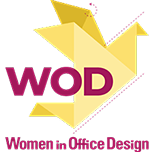Welcome to our last Feature Friday of the month! This week we speak with Su-San Tan of Space Matrix.
WOD: Thanks for being involved with our Feature Friday series, Su-San. Why don’t we start with your background and what ultimately lead you into the world of workspace design…
ST: “From Singapore! Where I live now. My education was divided between Singapore and in England where I lived for 11 years. With an insatiable curiosity for how human societies develop, their culture, history, landscape and economy, my first degree was in BSc in Geography. Fascinated with how communities develop and habitats evolve, I continued studying and completed a MPhil in Town and Country Planning with a focus on community participation in arts-based urban regeneration. After a foray back in Singapore as a town planner in city planning, channels and alliances role in the information technology sector and stint in the F&B industry, I landed a client services role in the corporate interiors industry combining synergies from my past experiences. As a workplace strategist for the past 18 years, it has been my privilege to collaborate with inspiring business leaders and engage with talented professionals to design workplaces for organisations globally. Together with the opportunities of a global role, living and working in China, Hong Kong and Kuala Lumpur have enriched my experiences.
Along the way, my conversations with multiple levels of people in different organisations highlighted the importance of authentic corporate cultures and transformational leadership styles on human flourishing. For sure, designing beautiful and functional workplaces is an enabler for organisation performance. But “beauty is only skin deep”. The ‘personality’ of an organisation shows up in its corporate culture. People are intrinsically more motivated to perform to their best when their personal purpose connects with organisations’ purpose. When they experience that their organisation practises what it preaches and is true to its values and mission, that’s when you attract and retain talent.
To learn more about positive organisations and contribute to my personal mission to build individual flourishing and thriving communities, I continued into further learning and attained Postgraduate Diplomas in Positive Organisational Psychology and Leadership and recently completed my MSc Applied Positive Psychology.”
WOD: Wow, a very diverse journey. How about your currently role at Space Matrix – could you explain a little more about it?
ST: “For all our clients’ workplace, we perform diagnostics to gather user insights from their settings and situations to design future states of their workplace ecosystem. Goals matter. That goal can be an experience, an emotion, or a place that is a sum of the desired outcome. If the workplace no longer serves the organisation in its future of work, we find out ‘why’ in order to plan for the next step of ‘what’. This is what Insights “do”. As a strategist, my most rewarding work goes into thinking about my audience. This analysis provides insights to “light up” a direction for change.
As a facilitator, I connect with people on a whole systems basis. Applying a strengths based approach steeped in positive psychology principles, we creatively engage the wisdom of the crowd as competent architects of their Change. If we want to inspire our people to be better, we need to have conversations that go beyond space and place. Leaders can broaden and build and amplify what works really well and creatively retire what no longer works – this includes our rituals, habits and behaviours. Leaders build trust with their people through constructive conversations throughout the workplace project; they present tiny mindset shifts by demonstrating empathy and emotional agility.”

WOD: And what does a typical working day for you look like?
ST: “You would typically find me engaging with clients and colleagues in ideation and evolving design strategies; or in deep focus work and connecting strategy principles into design and experience. I’ll always try to spend a good hour sometime in the day reading academic literature and opinion articles to learn about changing perspectives and how they apply to the work I do.”

